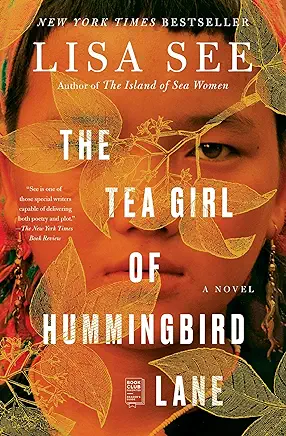The author begins her story in 1988 with an introduction to the Akha tribe, a people so isolated from the rest of China that they weren’t subject to the one-child rule. The Great Leap Forward is a distant rustling as viewed from Spring Well village in Yunan province (a name many of us have seen on tea labels). The effect of Chinese Communist rule is only felt by Akha tribal members when they move outside their tradition-ruled bubble, though over the course of the story, that changes somewhat.
Learning about this tribe is the key virtue of this book; Ms. See’s research is impressive. The reader learns that the Akha have a 12-day week, with each day named for an animal. The protagonist, called “girl” in her village and Lin-yan elsewhere, was born on Pig Day and her dalliance with a boy who was born on Tiger Day is considered unpropitious. Family members are known as First Brother, First Sister-in-Law, Second Brother, and so on. Their religion is animistic, with its dicta issuing from dreams, revelations and rules, shibboleths, habits, and practices that shock the Western reader, such as deeming twins human rejects who must be taken into the forest and smothered by their father at birth.
The Akha tribe grows tea, and sipping my cuppa each morning will never be the same after learning what it takes to get it to me. Spring Well village lives on the edge of poverty, with everyone working from dusk to dawn climbing up the steep mountain to harvest the tea leaves, then hauling the leaves down the mountain on their backs to market. Some wives take care of the household and young children, and everyone else is harvesting tea.
The sexual practices in the village are confusing. Intercourse is called going to the “Flower Room.” (Charming) The boys and girls “go into the forest to steal love.” If both parties like it in the Flower Room, the boy proposes they stay together. If the girl accidentally “comes to a head” while stealing love, they either marry or take a potion devised by Li-yan’s mother or another midwife to end the pregnancy.
Li-yan comes to head and gives birth without a husband and is expected to kill the resulting child. Instead, she treks to a nearby city where the child is taken in at a state shelter. Li-yan is haunted by thoughts of the daughter she abandoned, and the rest of the book interleaves the life of the daughter, adopted by a wealthy California couple, and Li-yan’s.
The story itself is pedestrian in the extreme. Li-Yan is miraculously smart and ambitious, but only blossoms when she is forced to leave her native village. Exiled, she opens a successful tea business. In a public park, she befriends a woman who introduces her son Jin, a blank Prince Charming whose role is to fill holes in the story. The reader knows only that he is supportive, good-looking, affectionate, kind, infinitely rich, open-minded, clever…whatever the story needs in order to progress.
I won’t give away the ending, but even from this brief overview, you may have predicted it. Ms. See seems to have gotten stuck partway through her plot with no clear road forward, so she created miraculous people and events to untangle the knots, resulting in a tedious dénouement.
A companion book might be The Book of Tea, the brilliant, book-length essay written by Japanese author Kakuzo Okakura in the beginning of the 20th century. Though Japan had only opened up to the Western world a few decades before the author came to America, he wrote in English, joining Nabokov and Conrad as masters of the English language who grew up speaking another language. Okakura weaves history, sociology, religion, philosophy, architecture, family life, health, and all of life into the story of tea.
